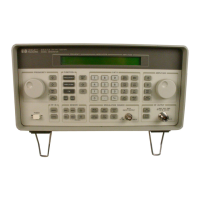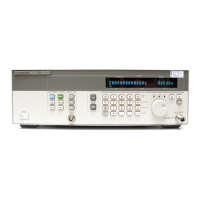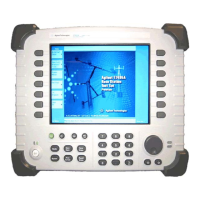1-39
Installing the 86100C
Fiber-Optic Connections
• If friction is encountered, STOP! Disassemble the connector immediately
and determine the cause of the problem. Failure to observe this caution will
lead to almost certain damage to one or both of the connectors.
• When you make a connection, turn only the connector nut. Do not rotate a
device when you make a connection and do not apply lateral or horizontal
(bending) force.
Fiber-Optic Connections
W A R N I N G If flammable fluids are used to clean connectors, the fluid shall not be placed on the
instrument during, use or when connected to mains voltage. Cleaning the
connectors shall take place in ventilated area to allow fluid vapors to dissipate, and
reduce the risk of fire.
• Never use metal or sharp objects to clean a connector and never scrape the
connector.
• Avoid matching gel and oils.
CAUTION Index matching compounds should never be applied to their instruments and accessories.
Some compounds, such as gels, may be difficult to remove and can contain damaging
particulates. If you think the use of such compounds is necessary, refer to the compound
manufacturer for information on application and cleaning procedures.
• When inserting a fiber-optic cable into a connector, gently insert it in as
straight a line as possible. Tipping and inserting at an angle can scrape material
off the inside of the connector or even break the inside sleeve of connectors
made with ceramic material.
• When inserting a fiber-optic connector into a connector, make sure that the fi-
ber end does not touch the outside of the mating connector or adapter.
• Avoid over tightening connections.
Unlike common electrical connections, tighter is not better. The purpose of
the connector is to bring two fiber ends together. Once they touch, tightening
only causes a greater force to be applied to the delicate fibers. With connec-
tors that have a convex fiber end, the end can be pushed off-axis resulting in
misalignment and excessive return loss. Many measurements are actually

